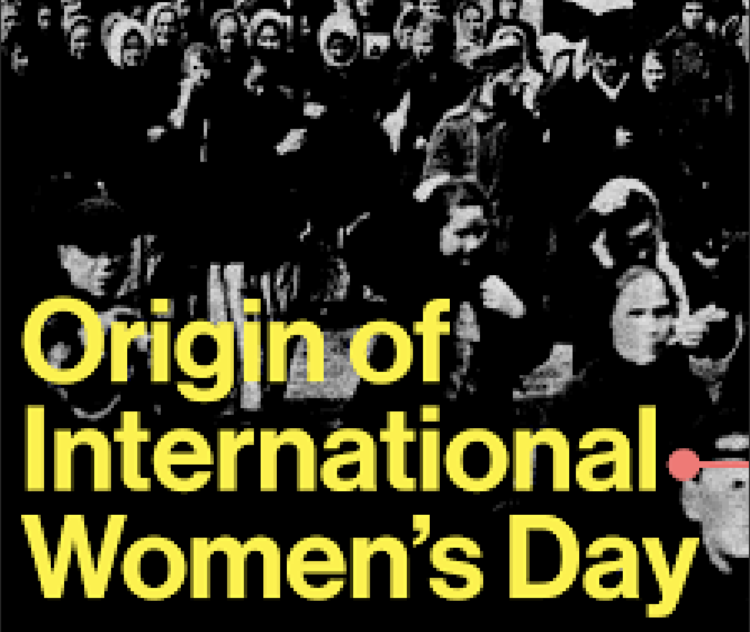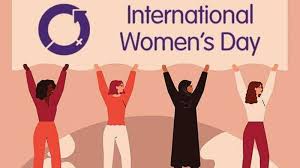International Women’s Day (IWD) is celebrated annually on March 8th to commemorate the social, economic, cultural and political achievements of women throughout history. The day is also an opportunity to recognize the ongoing struggle for gender equality and to call for further action to advance women’s rights worldwide. Here we will know about the history of International Women’s Day, from its roots in the early 20th century to the present day.

Origins of International Women’s Day
The origins of International Women’s Day can be traced back to the early 20th century when women began to organize and campaign for their rights. In 1908, 15,000 women marched through New York City demanding better working conditions, the right to vote, and an end to child labor. The following year, the Socialist Party of America declared the first National Women’s Day, which was celebrated on February 28th.
History of International Women’s Day
In 1910, an International Women’s Conference was held in Copenhagen, Denmark, where Clara Zetkin, a German socialist and feminist, proposed the idea of an International Women’s Day. The conference was attended by more than 100 women from 17 countries, and they unanimously agreed to Zetkin’s proposal. The first International Women’s Day was celebrated on March 19, 1911, in Austria, Denmark, Germany, and Switzerland.
Early Celebrations
In the years following the first International Women’s Day, the celebration continued to spread throughout Europe. In 1913, Russian women observed their first International Women’s Day on the last Sunday in February, and in 1914, International Women’s Day was celebrated on March 8th in Germany, Austria and other European countries. During this time, the day was primarily focused on women’s suffrage and labor rights.
In 1917, on the last Sunday of February, Russian women workers led a strike in Petrograd, demanding “bread and peace” and an end to World War I. The strike was a turning point in the Russian Revolution, and it led to the abdication of Tsar Nicholas II and the establishment of the first provisional government in Russia. The day of the strike, February 23rd, became known as International Women’s Day in the Soviet Union, and it was celebrated annually as a national holiday.
International Women’s Day during World War II
During World War II, International Women’s Day was celebrated in Allied countries to honor women’s contributions to the war effort. In the United States, President Franklin D. Roosevelt declared March 8th as National Women’s Day in 1945, and in the United Kingdom, a Women’s Day was organized by the Communist Party in 1947.
Post-War Celebrations
After World War II, International Women’s Day continued to be observed around the world, and it began to take on a broader focus beyond suffrage and labor rights. In 1975, the United Nations officially recognized International Women’s Day, and it has since become a global holiday celebrated in many countries.
In the 1980s, International Women’s Day was adopted by the feminist movement as a day to raise awareness of women’s issues and to call for gender equality. The day became an important platform for women’s rights activists to advocate for reproductive rights, ending violence against women, and closing the gender pay gap.

Recent Celebrations
In recent years, International Women’s Day has gained renewed attention, particularly in the wake of the #MeToo movement and other high-profile cases of sexual harassment and assault. The day has become an opportunity for women to speak out against gender-based violence and to call for greater accountability and action from governments and institutions.
In 2018, the theme of International Women’s Day was #PressforProgress, which called on people around the world to take action to advance gender parity. In 2019, the theme was #BalanceforBetter, which emphasized the importance of gender balance in all areas of life. And in 2020, the theme was #EachforEqual, which called for individual action to create a more gender-equal world.
International Women’s Day is celebrated in many ways around the world. In some countries, it is a national holiday, while in others, it is marked by protests, marches, and rallies. In many places, women’s groups and organizations host events to celebrate the achievements of women and to raise awareness of women’s issues.
Despite progress in advancing women’s rights, gender inequality remains a pervasive issue worldwide. Women continue to face barriers to education, employment, and political participation, and they are disproportionately affected by poverty, violence, and discrimination. International Women’s Day serves as a reminder of the ongoing struggle for gender equality and the need for continued action to achieve it.
Final Thought
International Women’s Day has a rich and complex history, spanning over a century and reflecting the evolving struggles and achievements of women around the world. While the day has its roots in the fight for women’s suffrage and labor rights, it has come to encompass a much broader range of issues, from reproductive rights to gender-based violence to economic empowerment. As we celebrate International Women’s Day each year, we are reminded of the ongoing work that is needed to achieve gender equality and create a more just and equitable world for all.



0 Comments